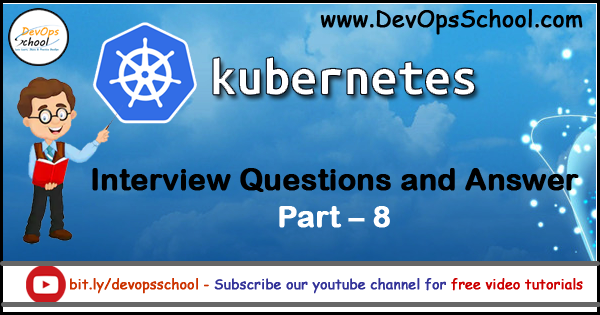
What is the primary application transport mechanism for the Kubernetes API Server?
- Server side RPC calls
- Javascript over WebSockets
- TCP multiplexing over HTTP/S
- JSON Over HTTP/S (Ans)
Objects in the Kubernetes API are organized by which following methods?
- Kind, Group and API Version (Ans)
- etcd’s concurrency model
- Object level resourceVersion
- Key value store
Which kubectl command will retrieve the definition/documentation for an API Object from the API Server?
- get document
- –objectName
- explain (Ans)
- get object
As new API Versions become available what is the release cadence?
- Alpha -> Beta -> Stable (Ans)
- Versioning
- Stable – > Production -> Primary Release
- Release
If you needed to assign workload to a subset of nodes in your cluster, what method would you choose so that you are not dependent on the Node names in the cluster?
- Annotate the nodes and use a hardwareSelector in your Pod Spec
- Annotate the nodes and use a namespace in your Pod Spec
- Label the nodes and use a nodeSelector in your Pod Spec
- This is not possible in Kubernetes due to it’s declarative model for deployments (Ans)
Which of the following will remove the label disk from a node?
- kubectl label node c1-node2 disk
- kubectl relabel node c1-node2 disk-
- kubectl label node c1-node2 disk-
- kubectl remove label node c1-node2 disk (Ans)
What is the primary function of a Controller in Kubernetes?
- Running bare/naked Pods
- Migrating Pod workloads to the Cloud
- Migrating Pod workloads between Nodes
- To keep your application in the desired state (Ans)
What is the primary design goal for using multi-container Pods?
- Scaling stateful containers
- Tightly coupled applications (Ans)
- More flexible recovery options when restarting Pods
- Scaling stateless containers
Which of the following is the appropriate order of a Pod’s lifecycle?
- Creation -> Running -> Restart
- PodSpec -> Running -> Termination
- Kubectl run -> Running -> Termination
- Creation -> Running -> Termination (Ans)
Which container restart policy will restart a container only on a non-zero exit code?
- OnFailure (Ans)
- Never
- OnNonZeroExitCode
- Always
For Kubernetes API Objects that were part of the initial releases, which API Group are they in?
- They’ve been refactored into their appropriate API Groups
- Fundamental
- Workload
- Core/Legacy (Ans)
What is the primary way to subdivide a cluster on the basis of resource isolation and/or organization?
- Namespace (Ans)
- Label
- Annotation
- Subclustering/Federation
What is the primary way in Kubernetes to execute a command on a grouping of resources based on using a selector?
- Annotations
- Labels (Ans)
- Querying
- Namespaces
What is the primary way to store information along with your resources in the cluster?
- Annotations (Ans)
- resourceNotes
- Labels
- Namespaces
Which of the following will return the pods whose label is app=prod?
- kubectl get pods -l app=prod (Ans)
- kubectl get pods -l app<>prod
- kubectl get pods -l prod
- kubectl get pods -l app!=prod
What is the primary unit of allocating work in a Kubernetes Cluster?
- Manifest
- Pod (Ans)
- Deployment
- Container
What is the primary function of a Controller in Kubernetes?
- To keep your application in the desired state (Ans)
- Migrating Pod workloads to the Cloud
- Migrating Pod workloads between Nodes
- Running bare/naked Pods
When using kubectl exec, a connection is first made to what cluster component prior to sending the command to the Pod?
- The Controller Manager
- The API Server (Ans)
- The Scheduler
- The Kubelet
Which type of container probe will restart your container on probe failure?
- livenessProbe (Ans)
- SIGTERM
- readinessProbe
- SIGKILL
- How to remove sensitive warning from ms office powerpoint - July 14, 2024
- AIOps and DevOps: A Powerful Duo for Modern IT Operations - July 14, 2024
- Leveraging DevOps and AI Together: Benefits and Synergies - July 14, 2024

